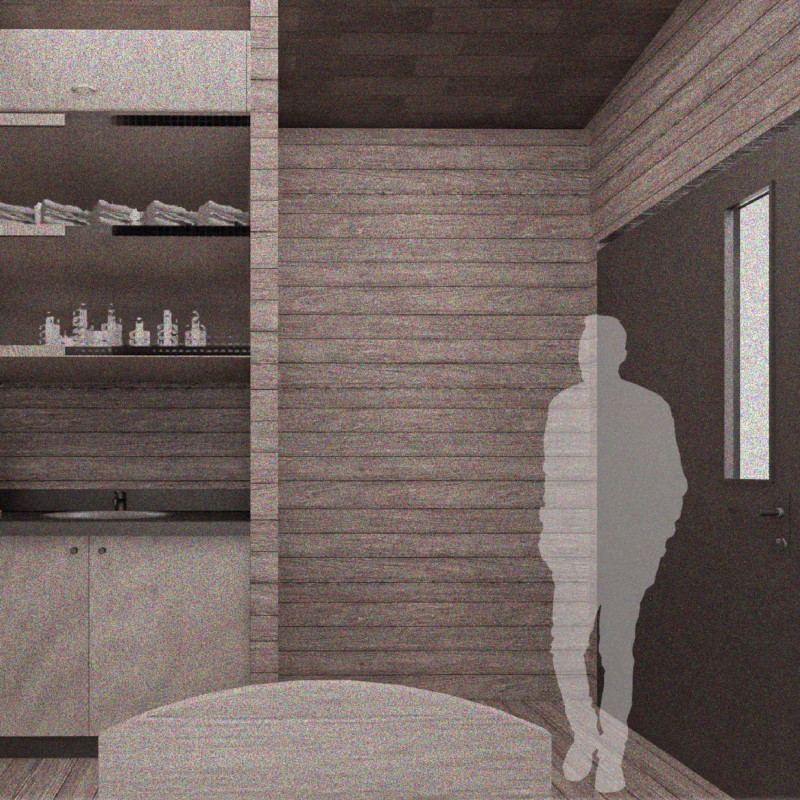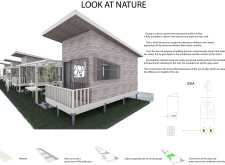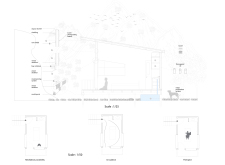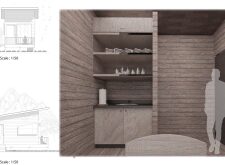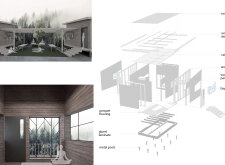5 key facts about this project
At the heart of this project are a series of cabins that have been meticulously positioned to maximize views of the lush surroundings while minimizing the disruption to the existing landscape. The cabins are designed to foster a sense of community among users, while also providing private areas for personal contemplation. Each cabin is elevated on pilings to adapt to the site's varied topography, allowing for natural drainage and minimal ecological disturbance. This approach not only enhances the functionality of the structures but also demonstrates a commitment to sustainable architecture.
One of the distinguishing features of "Look at Nature" is the careful selection of materials. The primary material used is wood, which constitutes the backbone of the cabins' structural framework. This choice not only reflects the natural aesthetics of the environment but also provides insulation and reduces the project's overall carbon footprint. The use of metal posts lends structural integrity while maintaining a sleek visual appearance, contributing to the modern architectural ethos. Roofing is constructed from aluminum sheeting, selected for its durability and reflective qualities that seamlessly blend with the sky. The inclusion of glass wool insulation ensures that the interiors remain comfortable throughout the seasons, enhancing user experience.
The project also features unique design elements that promote health and wellness. Dedicated meditation spaces are incorporated to encourage mindfulness practices, allowing users to immerse themselves in the calming surroundings. Circulation routes have been designed to facilitate easy movement both within the cabins and between neighboring structures, promoting a sense of connectivity and accessibility. Therapeutic amenities, including areas for relaxation and natural treatments, emphasize the project's focus on holistic well-being.
Architectural details such as bay windows not only create a visual dialogue between the indoors and outdoors but also enhance the influx of natural light, reinforcing the connection with the landscape. The design ensures that every element of the cabin serves a dual purpose, whether functional or aesthetic, illustrating a practical approach to architectural solutions.
Overall, "Look at Nature" sets a precedent in architecture by intertwining contemporary design with a commitment to environmental and personal well-being. The project demonstrates that architecture can serve as a bridge to nature, offering a sanctuary for solitude while promoting community engagement. This well-rounded approach to design makes the project not just a series of buildings, but a holistic living experience grounded in the principles of sustainability.
For those interested in exploring the nuances of this architectural endeavor, reviewing its architectural plans, sections, and designs will provide valuable insights. Delving into the detailed architectural ideas behind "Look at Nature" can further illustrate the thought processes and intentions that shaped this carefully crafted project, encouraging readers to ponder the profound relationships between architecture, nature, and human experience.


